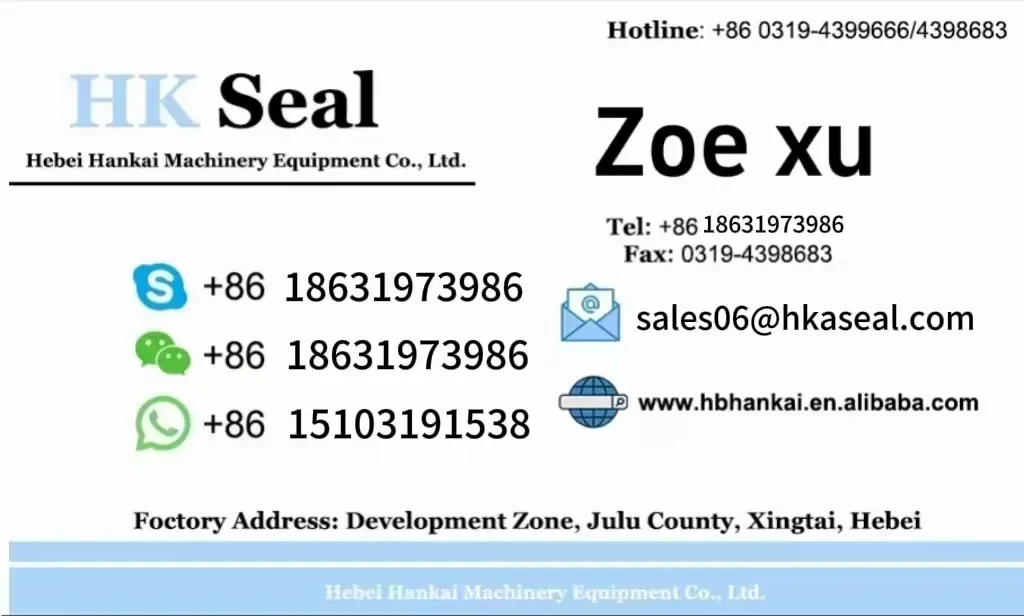Oct . 02, 2024 20:47 Back to list
Understanding Different Types of Wiper Seals and Their Applications in Various Industries
Understanding Wiper Seal Types A Comprehensive Guide
Wiper seals play a crucial role in various engineering and industrial applications, particularly in hydraulic and pneumatic systems. They serve the primary purpose of preventing fluid leakage from cylinders and other components while protecting internal parts from soil and contaminants. This article delves into the different types of wiper seals, their materials, applications, and the importance of selecting the right type for specific tasks.
What is a Wiper Seal?
A wiper seal, also known as a scraper seal, is designed to wipe away dirt, dust, or debris from the surface of a shaft. It acts as the first line of defense to keep contaminants away from sensitive areas like pistons or hydraulic rods, which can prolong the life of equipment and ensure optimal performance. Wiper seals are common in automotive, industrial, and agricultural machinery.
Types of Wiper Seals
1. U-Cup Wiper Seals U-cup wiper seals have a shape reminiscent of the letter U, which allows them to fit snugly around a shaft while providing a robust sealing mechanism. They are often made from elastomers and are ideal for low to moderate-speed applications. U-cups are particularly beneficial when minimal leakage is required, making them suitable for hydraulic cylinders and pneumatic systems.
2. Lip Seals Lip seals, characterized by their flexible lip that contacts the shaft surface, are among the most common types of wiper seals. The lip design allows the seal to deform slightly against the shaft, providing an effective barrier against contaminants. These seals can handle a wide range of speeds, making them a versatile option for various applications.
3. Polymer Wiper Seals Made from advanced materials such as polyurethane and PTFE, polymer wiper seals excel in high-performance environments. They offer excellent resistance to wear, heat, and a variety of chemicals. These seals are often used in applications where traditional elastomers may fail, such as in extreme temperatures or aggressive chemical environments.
4. Metal-Bodied Wiper Seals These seals feature a metal body combined with a wiper element, providing enhanced durability and extended service life. Metal-bodied seals are ideal for heavy-duty applications in which increased strength and resistance to deformation are essential. They are commonly used in mining, construction, and heavy machinery.
wiper seal types

5. Custom Wiper Seals For specialized applications, custom wiper seals can be designed to meet specific needs. Engineers may create seals tailored to particular dimensions, materials, and environmental conditions to ensure optimal performance in non-standard situations.
Material Choices
The material of a wiper seal is critical as it greatly influences its performance and compatibility with different fluids. Common materials include
- Nitrile Rubber (NBR) Offers good oil and wear resistance; ideal for standard hydraulic applications. - Fluoroelastomers (FKM) Provides excellent high-temperature resistance and chemical compatibility; used in aggressive environments. - Polyurethane (TPU) Known for its flexibility and wear resistance; ideal for dynamically moving seals.
Applications of Wiper Seals
Wiper seals are used in a myriad of industries including
- Automotive In power steering systems, brake systems, and suspension components. - Aerospace In hydraulic systems where weight and performance are critical. - Construction Equipment In machines like excavators and bulldozers that operate in harsh conditions.
Conclusion
Selecting the right type of wiper seal is essential for ensuring the efficiency and longevity of machinery. Factors such as operating conditions, required durability, and environmental factors must be considered. Understanding the various types of wiper seals available—as well as their specific advantages and applications—can significantly impact performance, reduce maintenance costs, and enhance overall system reliability. By making informed choices, engineers and operators can effectively protect machinery and prolong its operational life.
-
TCN Oil Seal Metal Ring Reinforcement for Heavy Machinery
NewsJul.25,2025
-
Rotary Lip Seal Spring-Loaded Design for High-Speed Applications
NewsJul.25,2025
-
Hydraulic Cylinder Seals Polyurethane Material for High-Impact Jobs
NewsJul.25,2025
-
High Pressure Oil Seal Polyurethane Coating Wear Resistance
NewsJul.25,2025
-
Dust Proof Seal Double Lip Design for Construction Equipment
NewsJul.25,2025
-
Hub Seal Polyurethane Wear Resistance in Agricultural Vehicles
NewsJul.25,2025
-
The Trans-formative Journey of Wheel Hub Oil Seals
NewsJun.06,2025
Products categories
















